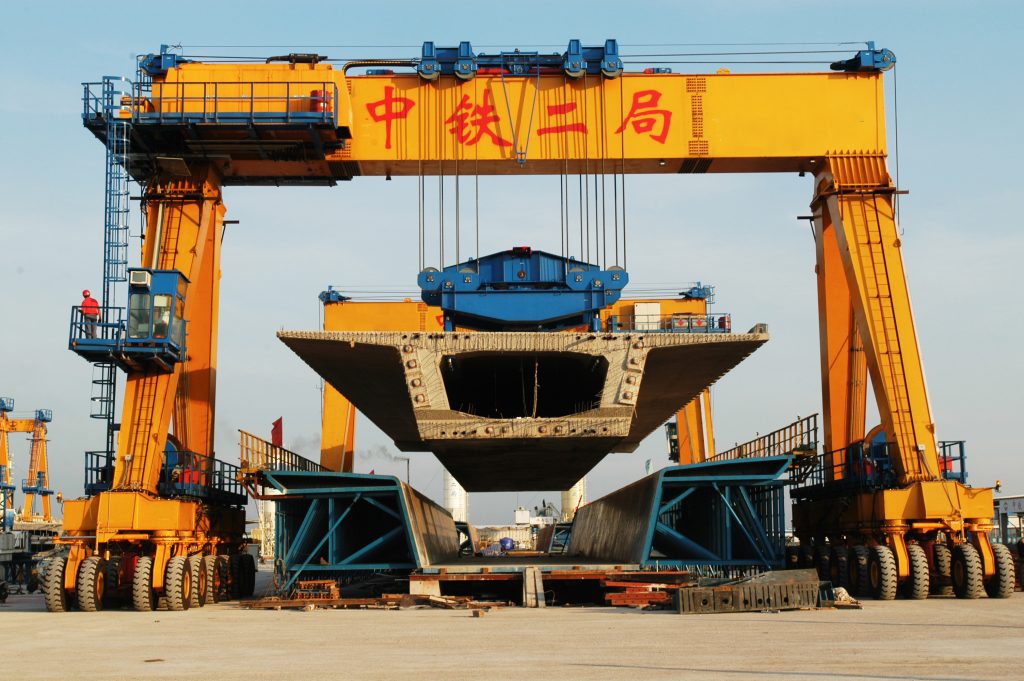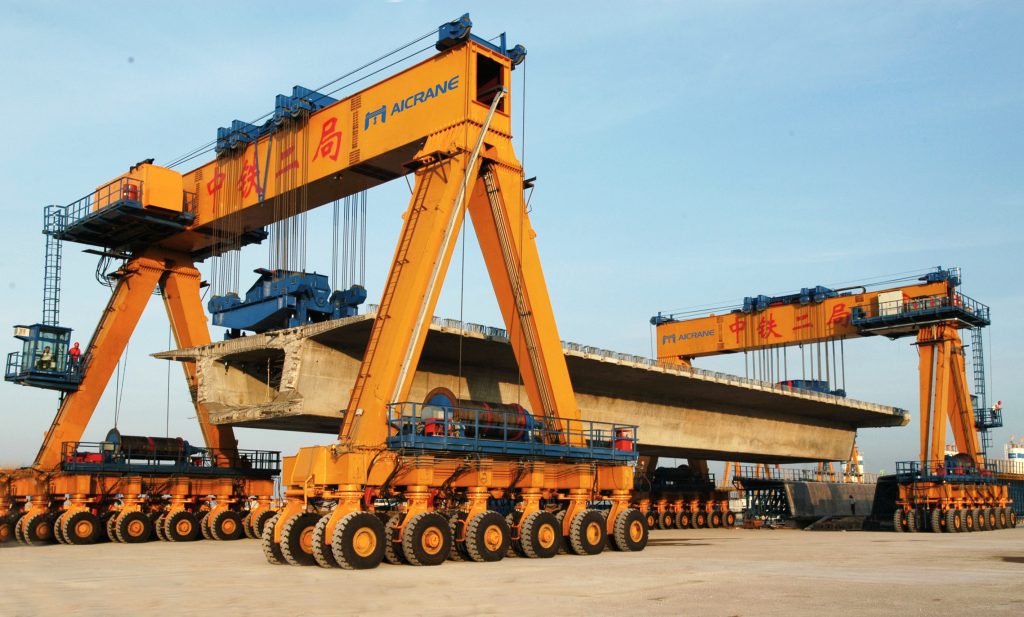The operation of a straddle carrier crane is a highly specialized process integral to efficient container handling in ports, terminals, and intermodal facilities. Straddle carriers, also known as straddle trucks or gantry carriers, are mobile gantry cranes designed to lift and transport containers in a unique and versatile manner. Their distinctive design, with long legs that can straddle container stacks, allows them to navigate container yards, load and unload containers from trucks, and transfer them between storage stacks and quayside.

Start-Up Procedures
The operation of a straddle carrier begins with a series of start-up procedures to ensure that the machine is in optimal working condition. This includes checking the fuel or energy source levels, inspecting the tires for proper inflation and condition, and confirming that all safety features and systems are functional. The operator also verifies communication systems to ensure effective coordination with other personnel and equipment in the terminal.
Control Systems Familiarization
Straddle carriers are equipped with advanced control systems that enable precise and efficient operation. Before handling containers, the operator undergoes training to become familiar with the control panel, joystick, and other input devices of the gantry crane. The control system typically includes features for steering, lifting and lowering the spreader, horizontal movement, and emergency stops. Understanding these controls is essential for safe and effective straddle carrier operation.
Container Pickup and Stacking
The primary function of a straddle carrier is to lift and transport containers. The operator positions the straddle carrier over the target container using the joystick controls. The spreader, a lifting device equipped with twistlocks, engages with the container’s corner castings. The operator then lifts the container and maneuvers the container gantry crane to the desired location, whether it’s a storage stack or another transport location. Straddle carriers are known for their ability to stack containers with precision, optimizing the use of available space in container yards.
Horizontal Movement
Straddle carriers excel in horizontal movement, allowing them to navigate between container stacks with ease. The operator uses the joystick controls to drive the straddle carrier forward, backward, and laterally. This horizontal mobility is crucial for efficient container handling operations, as it enables the straddle carrier to quickly reposition itself for the next task. The smooth and precise movement is essential to avoid collisions and maximize productivity.
Quayside Operations
Straddle carriers play a vital role in quayside operations, where containers are loaded or unloaded from ships. The straddle carrier positions itself along the quayside, extending its spreader over the ship’s deck. The spreader engages with the container, which is then lifted and maneuvered onto or off the ship. Quayside operations demand a high level of precision and coordination to ensure efficient loading and unloading, contributing to the rapid turnaround of vessels in the port.
Intermodal Transport
Straddle carriers are designed for intermodal transport, seamlessly moving containers between different modes of transportation. This includes transferring containers from trucks to storage stacks, loading containers onto trains, or unloading containers from trains for further distribution. The ability to handle containers across various modes of transport makes straddle carriers a versatile and integral component of intermodal logistics.
Safety Considerations
Safety is a top priority in straddle carrier operation. The operator must be vigilant and adhere to established safety protocols. Straddle carriers are equipped with safety features such as anti-collision systems, height restriction sensors, and audible alarms. Operators are trained to be aware of their surroundings, especially in busy container yards, and to communicate effectively with other personnel and equipment in the vicinity.
Emergency Procedures
In the event of an emergency, straddle carrier operators are trained to follow specific procedures. This may include using emergency stop controls, securing the container load to prevent accidents, or safely bringing the straddle carrier to a stop. Emergency procedures are crucial for mitigating risks and ensuring the safety of both the operator and other personnel in the terminal.

Maintenance Checks
Regular maintenance checks are a fundamental aspect of straddle carrier operation. Operators are trained to perform routine inspections before, during, and after shifts. This includes checking fluid levels, inspecting tires for wear and damage, and ensuring that all mechanical and electrical components are in working order. Regular maintenance helps prevent equipment failures and contributes to the overall reliability of straddle carriers.
Communication with Control Tower
Straddle carrier operators maintain communication with the control tower or central command center. This communication is essential for receiving instructions, updates on container assignments, and coordinating movements with other straddle carriers and equipment in the terminal. Clear and effective communication is critical to maintaining the overall efficiency of container handling operations.
Technology Integration
Advancements in technology have led to the integration of automation and smart technologies in straddle carriers. Some modern straddle carriers feature automation for certain tasks, such as container positioning and stacking. Additionally, sensors and cameras may be integrated to provide the operator with enhanced visibility and assist in navigating tight spaces or avoiding obstacles.
Battery Charging/Refueling
Depending on the power source, straddle carriers may require periodic charging or refueling. Electric straddle carriers are powered by batteries and may need to be recharged during breaks or between shifts. Diesel-powered straddle carriers require regular refueling. Operators are responsible for managing the power source to ensure uninterrupted operation. Contact your crane manufacturer to learn more about it.
End-of-Shift Procedures
At the end of a shift or when the straddle carrier is not in use, operators follow specific procedures for securing the equipment. This may include lowering the spreader to the ground, parking the straddle carrier in a designated area, and shutting down the engine or power source. Proper end-of-shift procedures contribute to equipment longevity and ensure that the straddle carrier is ready for the next operational cycle.
Ongoing Training
Straddle carrier operators undergo ongoing training to stay updated on new technologies, safety protocols, and operational best practices. Training programs include both theoretical knowledge and practical hands-on experience. Ongoing training ensures that operators remain proficient in their roles and can adapt to changes in equipment or operational procedures.
In conclusion, the operation of a straddle carrier crane is a multifaceted process that demands skill, precision, and a strong focus on safety. Straddle carriers play a pivotal role in the logistics and efficiency of container handling in maritime and intermodal operations. The combination of advanced control systems, horizontal mobility, and adaptability to various tasks makes straddle carriers indispensable in modern container terminals and ports around the world. The well-trained and skilled operators, coupled with ongoing maintenance and safety measures, contribute to the successful and efficient operation of straddle carrier cranes in dynamic and demanding maritime environments.